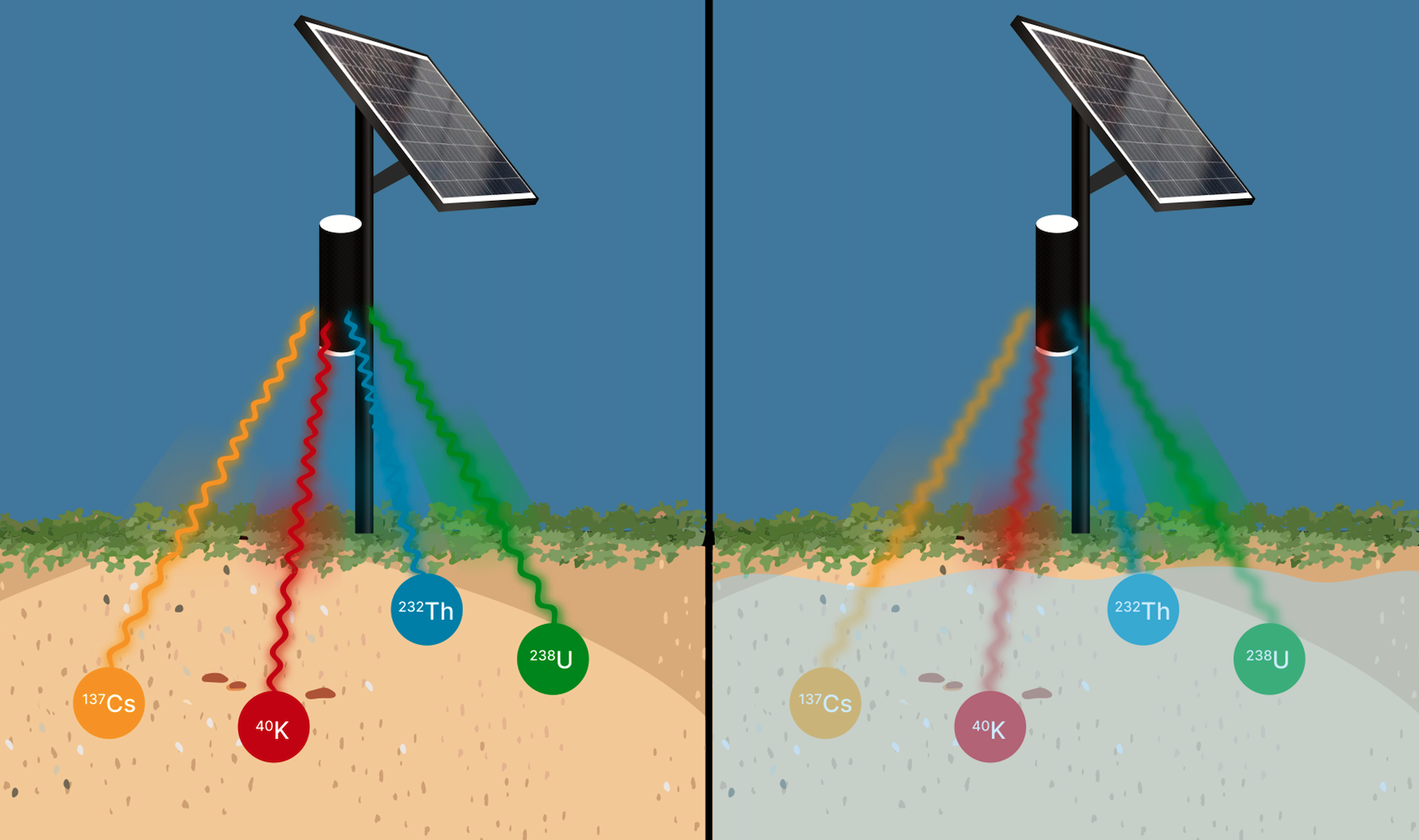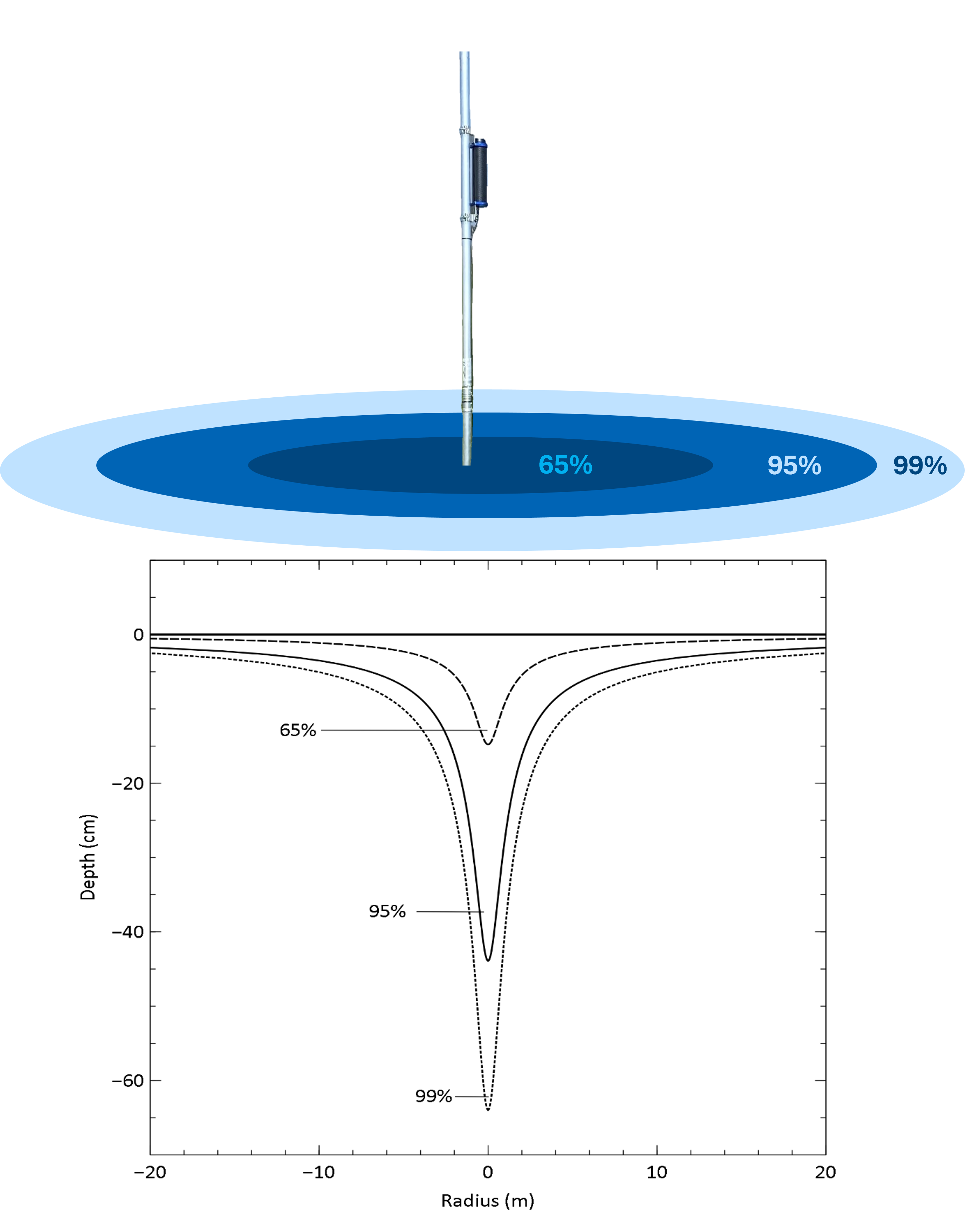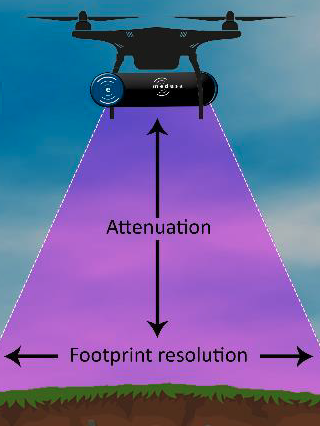Soil moisture
Overview
Gamma-ray spectrometry is a non-invasive technique that measures natural background radiation emitted by isotopes such as potassium (40K), uranium (238U), and thorium (232Th) that are present in the soil. Large-scale variations in the gamma signal are typically due to differences in soil texture and mineral composition—for example, clay-rich soils emit more radiation than sandy soils. However, soil moisture introduces more subtle, short-term fluctuations. Water in the soil attenuates gamma radiation, meaning higher moisture content results in a lower detected gamma signal. This sensitivity to moisture allows gamma-ray sensors to indirectly quantify soil water content, making the method highly suitable for spatial and temporal moisture assessments.
Gamma radiation in the energy range of 0.3–3 MeV, which is relevant to the mentioned natural radionuclides, is significantly attenuated by water, more than most common soil materials. When soil moisture increases, pore spaces in soil are filled with water, leading to a decrease in the measured concentration of radionuclides . Essentially, the presence of water weakens the signal read by the sensor.

A simple illustration of the soil moisture measurement through gamma-ray spectrometry. The signal read on the left (dry soil) is higher than the signal read on the right (wet soil). The amount of this change represents the change in the moisture content of soil.
Stationary Measurements
Stationary systems like the Medusa gSMS-100 are used for continuous, high-resolution monitoring at a fixed location. These sensors measure gamma radiation over time, allowing detection of changes in soil moisture linked to rainfall, evaporation, or irrigation. Because the sensor remains at a fixed point, it offers highly accurate time series data that reflect temporal moisture dynamics. The gSMS is particularly valuable in long-term monitoring applications, such as tracking peatland degradation or assessing irrigation practices, where consistent measurements are critical.
Spatial Mapping
Conclusions
Gamma-ray spectrometry offers a powerful, non-invasive method for monitoring soil moisture by detecting variations in natural background radiation. Whether deployed in stationary systems like the gSMS for continuous time-series data or used in drone-based surveys for spatial mapping, this technique provides accurate, scalable insights into moisture dynamics. Its flexibility and precision make it a valuable tool for both agricultural management and environmental research.
References
Andreasen, M., Van der Veeke, S., Limburg, H., Koomans, R., & Looms, M. C. (2025). Soil moisture time series using gamma‐ray spectrometry detection representing a scale of tens‐of‐meters. Water Resources Research, 61, e2024WR039534.
Baldoncini, M., Albéri, M., Bottardi, C., Chiarelli, E., Raptis, K. G. C., Strati, V., & Mantovani, F. (2019). Biomass water content effect on soil moisture assessment via proximal gamma-ray spectroscopy. Geoderma, 335(August 2018), 69–77. https://doi.org/10.1016/j.geoderma.2018.08.012
Hubbell and Seltzer, 2004, X-Ray Mass Attenuation Coefficients | NIST
van der Veeke, S. (2023). UAV-borne radioelement mapping: towards a guideline and verification methods for geophysical field measurements. [Thesis fully internal (DIV), University of Groningen]. University of Groningen. https://doi.org/10.33612/diss.261264637



